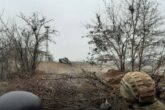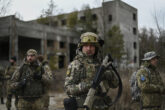September 12, 2014
Sea-based nuclear-weapons: Military needs and political consequences
How will the deployment of ballistic missile submarines by China and India affect the Indo-Pacific strategic landscape? What effect will these deployments have on stability in the region?
Unsurprisingly, the contributions thus far have shown that the picture is, as Rory Medcalf put it, 'murky.' As Bruno Tertrais pointed out, much of the inmpact on stability from these deployments will depend on the quality of the submarines, the range and reliability of their accompanying missiles, and the skill of their crews, as well as on the anti-submarine warfare efforts of their prospective foes. At the same time, as Tom Mahnken noted, a greater sense of second-strike assurance may embolden rather than relax at least China's ambitions. Meanwhile, Rod Lyon hasobserved that, even with all the qualifiers, strategic submarines tend to make adversary decision-makers think twice about attempting a first strike.
Thus far, the debate seems to be clustering around a general view that the deployment of ballistic missile submarines (SSBNs) is neither a panacea nor a catastrophe for stability, and that much will turn on how they are operated and on how much they are relied on for strategic advantage.
One aspect of their deployment that has not been sufficiently remarked upon, however, is how the deployment of systems as strategically significant as ballistic missile submarines may influence regional naval doctrine and operating patterns, and even national strategic objectives more broadly. Lyon touched on this point when he wrote that 'even vulnerable SSBNs might have value if deployed in protected bastions, behind layered defensive screens, exploiting known seabed topographies, confusing the targeteer with diversionary noisemakers, and keeping the warhead loadings low per boat.'
More from CNAS
-
North Korea Reveals Troop Dispatch to Russia amid U.S.-South Korea Policy Talks
North Korea has confirmed for the first time that its troops are operating in Russia, and it is preparing to rewrite its party charter with the possibility of officially namin...
By Dr. Go Myong-Hyun
-
Chinese Maker of Bitcoin-Mining Machines Is a Security Threat, Says Expert
Bloomberg News reports that a Chinese manufacturer, Bitmain Technologies Ltd, that sells most of the world’s Bitcoin-mining machines — including 16,000 of them to a venture ba...
By David Feith
-
Defense / Transatlantic Security
When Defense Becomes Destruction: Austria-Hungary’s Mistake and Ukraine’s RiskThis article was originally posted on War on the Rocks. The southeastern Polish city of Przemyśl, with its elegant 19th century Habsburg-era train station, remains one of the ...
By Franz-Stefan Gady
-
Defense / Transatlantic Security
Ukraine’s Catch-22 MomentThis article was originally published in the Financial Times. In Joseph Heller’s wartime classic, Catch-22, the protagonist Yossarian seeks out the US army surgeon Doc Daneeka...
By Franz-Stefan Gady




